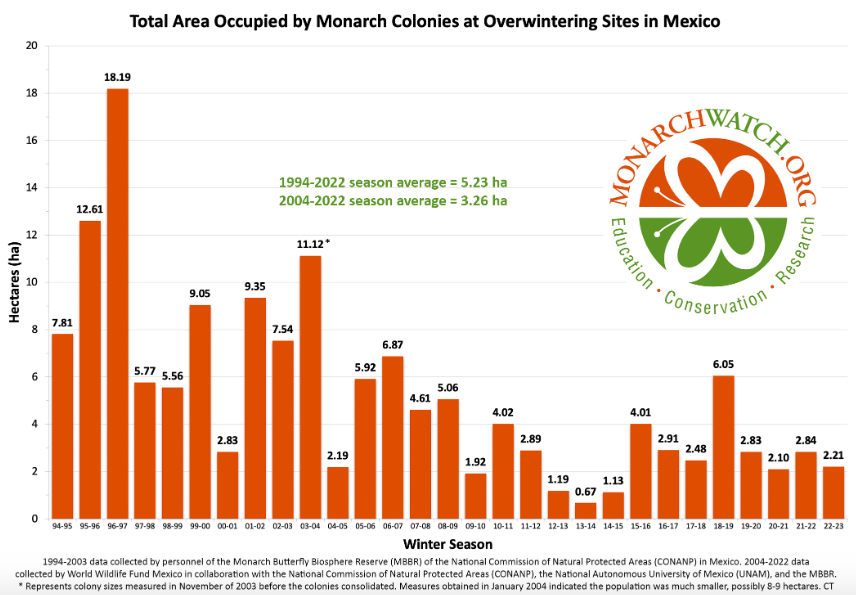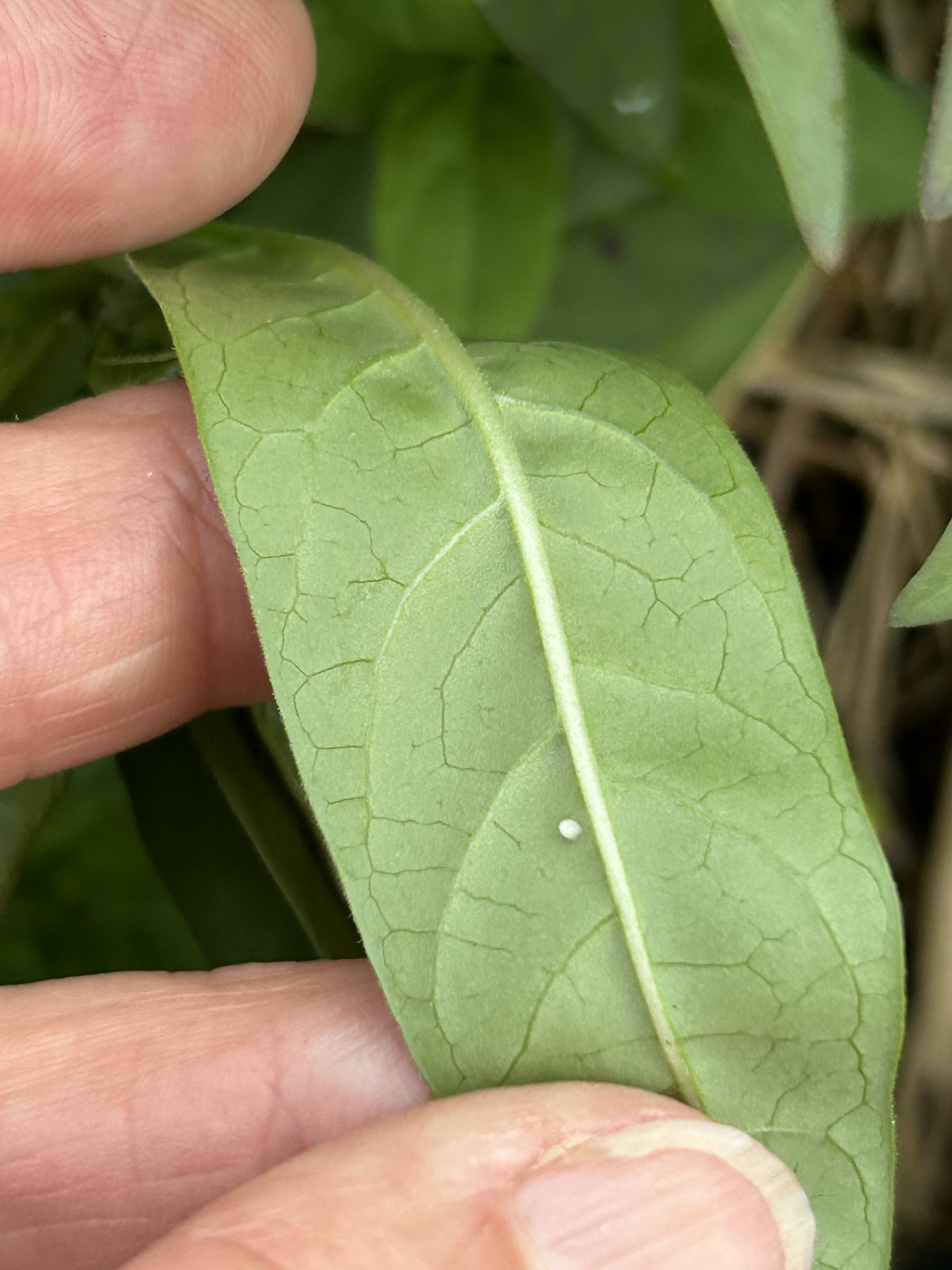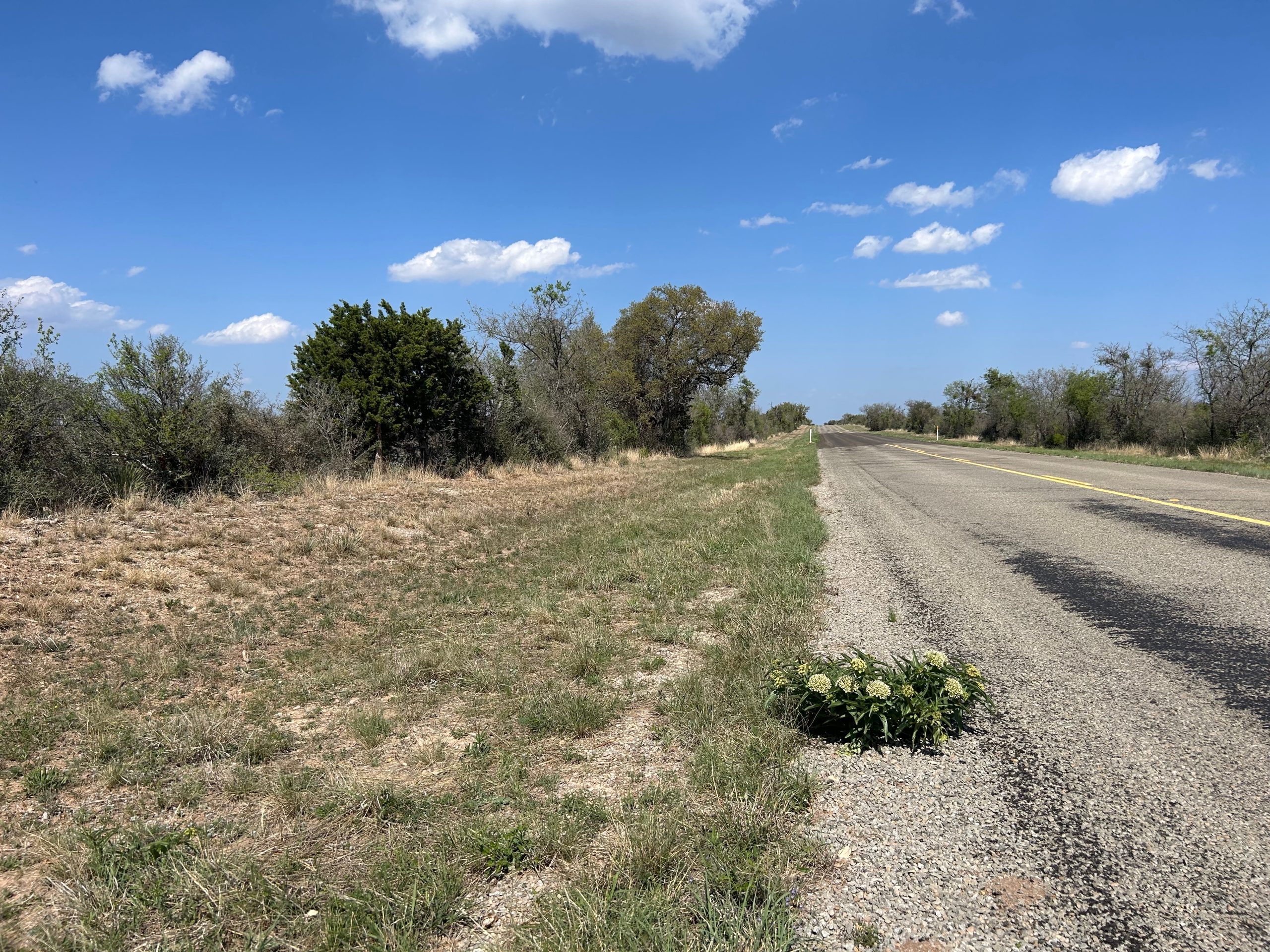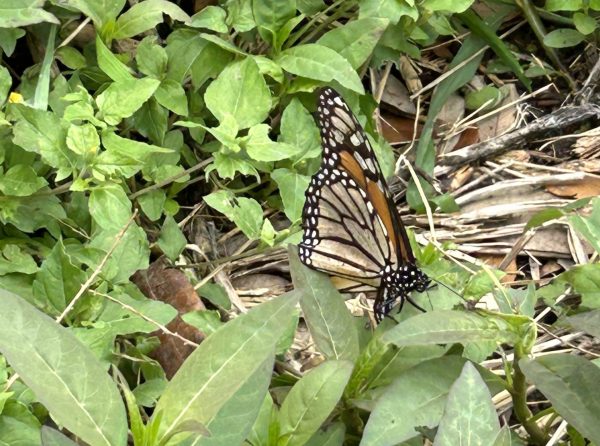A reduced population of monarch butterflies has begun its 2023 spring migration with departures from Mexico just as the World Wildlife Fund (WWF) announced that the iconic insects’ overwintering colonies declined 22% since last year.
WWF officials reported earlier this week that the butterflies occupied only five and a half acres (2.21 hectares) of the Monarch Butterfly Biosphere Preserve this season compared to seven acres (2.84 hectares) last year.
“This is part of a mostly downward trend over the past 25 years—when monarchs once covered more than 45 acres of forest,” said WWF-Mexico’s General Director Jorge Rickards in the March 21 press release.
The international conservation organization, which oversees the protected areas in Mexico where the monarchs roost each winter, cited habitat loss, herbicides and a changing climate as reasons for the decline. The announcement also noted that 145 acres of the butterflies’ overwintering forest have been degraded, a substantial increase when compared to the 47 acres lost in the previous year.

Monarch Watch, a monarch butterfly conservation and citizen science organization at the University of Kansas at Lawrence, commented in a blog post that the number of butterflies tagged during the this year’s migration was the lowest in nine years.
“This was another sign that the overwintering numbers would be low since the number tagged is correlated with the size of the overwintering population,” read the post. The article blamed droughts in Texas and late arrivals at the overwintering sites as other factors contributing to the low numbers.
Another monarch conservation organization, Monarch Joint Venture, responded to the WWF announcement by noting that “while the butterflies’ population fluctuates annually, the long-term decline continues to be of great concern and in need of conservation action.”
The reduced population began its northward movement around March 7, according to Journey North, which tracks monarchs and other wildlife. Correspondent Estela Romero reported in a weekly bulletin from the roosting sites on March 7 that about 75% of the monarchs had left the sanctuaries. “There are only a few monarchs remaining….Thousands can be seen streaming down the visitor staircase at the El Rosario Sanctuary,” Romero wrote.
Check out live monarch butterfly sightings on the Journey North map.
The milkweed and nectar buffet for egg laying and refueling that typically greets the migrating insects has been spotty and lacking in much of Texas, which often serves as the butterflies’ first stop in their multi-generation migration.
On the DPLEX-list, an email listserv of hundreds of monarch butterfly followers operated by Monarch Watch, one conversation string reflected the general mood:”Why so few monarchs in Central Texas?” John Barr, Jr. of Texas, asked the email group.

Monarch egg on milkweed on the San Antonio River, 3/25/23. Photo by Monika Maeckle
“I am out and about all over Austin most days. Normally I’m pretty good at spotting monarchs as I’m working in yards or driving to and from locations. This year I’ve seen just one. It was two weeks ago…”
Barr noted the “weird weather” Texas has experienced in recent weeks, unseasonably high temperatures in early March, followed by a week of lows.
“Last week it was in the low 30’s overnight with highs only in the 50’s in Austin metro,” wrote Barr, adding that a west coast storm was pushing through with strong winds out of the south.
Carol Clark responded that monarchs were arriving in “pretty good numbers” in North Texas–30 miles north of Dallas all the way to the Red River–this week.
San Antonio saw very few monarchs this month compared to past years. Our stretch of the Llano River in the Texas Hill Country has also witnessed few–only a single migrant on March 12. Swamp milkweeds remained mostly senescent and were just pushing their green shoots out this week.
The heat wave followed by near freezing temperatures earlier in March didn’t help. And 2022’s extremely dry summer left parts of the state in extreme drought, while sporadic rains coaxed some wildflowers out of the ground.
That said, a recent drive in the Texas Hill Country revealed sparse milkweeds and wildflowers in areas deprived of rain, while bluebonnets, prickly poppies and native asters speckled the landscape in places where moister conditions prevailed.

Life finds a way. Native Antelope horns milkweed, Asclepias asperula, on the highway near Mason, Texas on March 26, 2023. –Photo by Monika Maeckle
On March 23, Monarch Watch founder Chip Taylor relayed on the DPLEX-list that nearly all of the remaining monarchs that had overwintered at El Rosario sanctuary in Mexico had left the forest and headed north. He estimated it would take them 12-16 days to reach Texas and although that’s considered “quite late” for spring arrivals, the tardy arrivals will likely add to the cohort that preceded them by laying additional eggs that will increase the population as the migration progresses.
TOP PHOTO: Tattered female monarch lays eggs on Tropical milkweed along the San Antonio River, March 25, 2023. –Photo by Monika Maeckle


Howdy !!! Today, 14 August 2023, I saw a female monarch around the milkweed in my front yard (Arlington,TX)….I went out just now and found an egg……..is it a tad late for this ??????
No, it’s not too late. They’ll lay eggs into September
I live in south east N.H. We never saw Monarch butterflies until the 2nd week in August and then, only 3, all females. With all the rain we’ve had all of my common milkweed is dead but I do grow Hairy Ball milkweed from seed each year and that’s doing well. I’ve seen no eggs. Even if I found eggs the egg collection date for my zone has past. In the past I would have raised and released around 2O Monarch butterflies by now. It’s very alarming.
We live in Gaithersburg Md. By this time (mid-August), we would have upwards of 40 crystillis we would be caring for, with another 25 caterpillars feasting on our milkweed plants. We even bought more plants this year based on prior experience to support the monarchs. As of August 27, we have NO evidence of monarchs in our area. Has the Canadian wildfires impact the eastern migration of monarchs?
We’re near Nashville, Tn. We cared for over 200 ( hatched Monarchs) three years ago, then 100+ in 2021, then about 40 in 2022 and thus far ( August 2023) our total is zero. Have only confirmed seeing one female Monarch this year and a couple of males.
I live in southeast NewMecico and have been seeing increasing numbers of monarch butterflies the last 2 days. They lay many eggs every summer in myPurple Passion vine and I love watching them. There is still abundant vegetation for them here, I have seen so many I decided they are migrating and just stopped here to indulge.